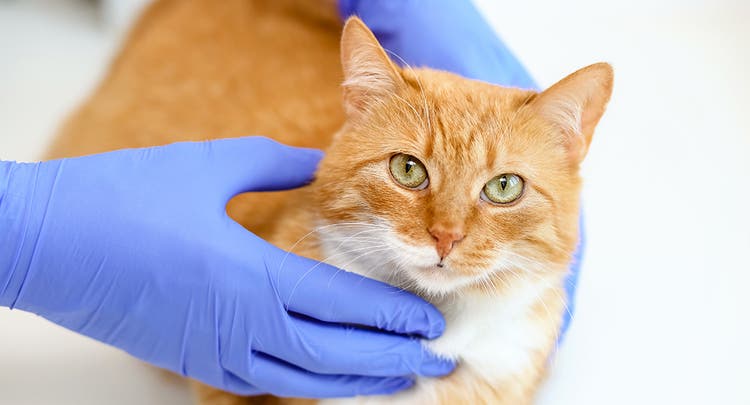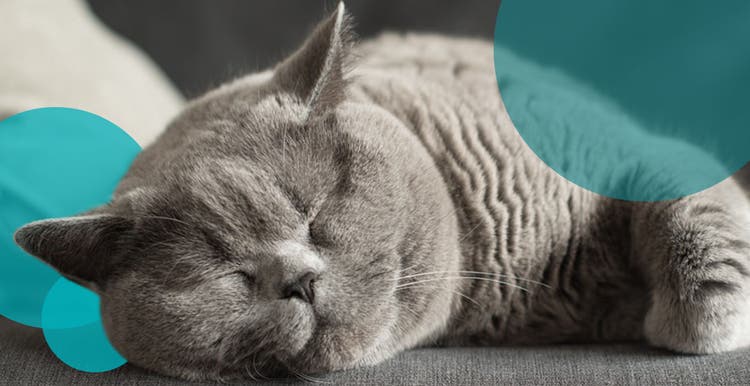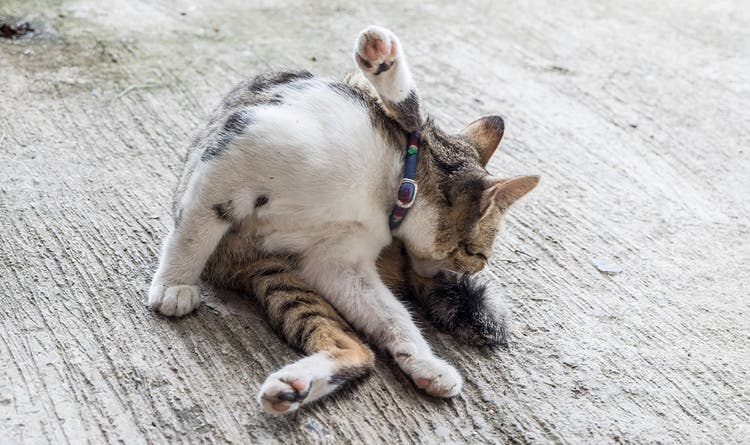How to spot the signs of cat diabetes.
Just like in our own cells, cats’ cells require sugar for energy. Sometimes, though, cats can develop a metabolic disease in which their body cannot properly regulate their blood glucose (sugar) levels. This condition is called feline diabetes, also known as diabetes mellitus.
Unfortunately, feline diabetes is becoming more prevalent1 and is particularly common in older, obese male cats. When left untreated, feline diabetes can cause serious complications, such as kidney disease, nerve damage, blindness and even death.
For pet owners, receiving a feline diabetes diagnosis can feel scary and overwhelming. They face the fear of the unknown and may worry about lifestyle changes and the complicated nature of insulin therapy. Recognizing the signs of feline diabetes can help you get your cat proper veterinary care sooner. Here’s what you should know.
Symptoms of Diabetes in Cats
Cats are known for quirky behavior, but at times you may ask yourself, “Why is my cat acting weird?” Unfortunately, that weird behavior may be a symptom of diabetes.
Common symptoms of feline diabetes include:
- Increased urination
- Peeing outside the litter box
- Weight loss despite a healthy appetite
- Excessive thirst
- Decreased activity level, energy and interest in surroundings
Additionally, cats with uncontrolled diabetes may, in rare cases, suffer from hind limb nerve damage, causing them to adopt a plantigrade stance (walking or standing with their heels near the ground).2 If your cat displays any of these symptoms, it is important to talk to your vet immediately.
Risk Factors for Feline Diabetes
Certain factors increase a cat's risk of developing diabetes, including weight, age, sex and breed type.
Obesity
Obesity is a significant risk factor for feline diabetes because excessive weight increases insulin resistance, making it more difficult for cells to absorb sugar from the bloodstream and leading to elevated blood sugar levels. Obese cats are also more likely to develop other related health problems, such as high blood pressure.
Age
Age is another significant risk factor for feline diabetes. As cats age they become less active and are prone to weight gain. Regardless of your cat’s weight or age, regular health check-ups can help detect feline diabetes early on.
Sex and Breed Type
Interestingly, sex and breed type also play a role as a potential risk factor for feline diabetes. Male cats are twice as likely to be diagnosed with diabetes than female cats. And Burmese, Russian Blue, Norwegian Forest cat, and Abyssinian breeds all show a higher likelihood of having diabetes than other breeds.3
If your cat presents any of the symptoms mentioned above, is overweight or is a breed prone to diabetes, it’s worth discussing with your vet. Diagnosing feline diabetes involves testing your cat's blood sugar levels, but your vet may also need to rule out other diseases with similar symptoms, such as urinary tract infections, chronic kidney disease, pancreatitis and hyperthyroidism.
Living with Feline Diabetes
Ultimately preventing diabetes is the best approach, so if you have an older or overweight cat, it is essential to promote cat weight loss by managing their diet and ensuring they get enough exercise to help reduce the risk of feline diabetes, even as they age.
Second to prevention, recognizing symptoms early is also important. The longer diabetes goes undiagnosed, the more likely a cat will develop complications. However, once diabetes is diagnosed, the most common treatment is insulin therapy, which is usually given twice a day, at consistent times, to help regulate blood sugar levels. Dietary changes and exercise can help manage the disease, too.
Conventional treatment can be tough for owners to administer. It requires consistency and patience, and unfortunately, it’s not very convenient. 88% of pet owners admit that insulin therapy interferes with their schedule, and 62% find it difficult to administer or have an uncooperative cat.4 In fact, 10% of cats diagnosed with diabetes are euthanized at the time of diagnosis and another 10% are euthanized within a year of diagnosis due to unsuccessful insulin therapy, which highlights just how difficult it can be to treat this disease.5
But now there is hope: Bexacat™ (bexagliflozin tablets) is the first FDA-approved, non-insulin, once-daily, flavored tablet for newly diagnosed cats naïve to insulin that makes treating diabetes easier than ever — and is completely needle-free. There are limitations to using Bexacat™, so it’s important to work with your veterinarian to determine the best treatment plan for your cat. With proper management, cats with diabetes can live longer, healthier lives.
Bexacat, Elanco and the diagonal bar logo are trademarks of Elanco or its affiliates.
References:
- State of Pet Health® 2016 Report. Banfield Pet Hospital. Accessed online at: https://www.banfield.com/en/pet-health/State-of-pet-health.
- Feline Diabetes. Cornell Feline Health Center. Accessed online at: https://www.vet.cornell.edu/departments-centers-and-institutes/cornell-feline-health-center/health-information/feline-health-topics/feline-diabetes
- Öhlund M, Fall T, Ström Holst B, Hansson‐Hamlin H, Bonnett B, Egenvall A. Incidence of Diabetes Mellitus in Insured Swedish Cats in Relation to Age, Breed and Sex. J Vet Intern Med. 2015 Sep-Oct; 29(5): 1342–1347.
- Elanco Animal Health. Data on file.
- Niessen S, Hazuchova K, Powney S, et al. The big pet diabetes survey: perceived frequency and triggers for euthanasia. Vet Sci. 2017;4(27):1-13.
Indication:
Bexacat is indicated to improve glycemic control in otherwise healthy cats with diabetes mellitus not previously treated with insulin.
Important Safety Information:
Before using Bexacat, you must read the entire package insert, including the boxed warning. Cats treated with Bexacat may be at an increased risk for conditions called diabetic ketoacidosis or euglycemic diabetic ketoacidosis, both of which may result in death. It is critical that cats taking Bexacat be examined by a veterinarian promptly if sudden decreases in appetite or water consumption occur, or if weight loss, tiredness, vomiting, diarrhea, or weakness are seen. Discontinue Bexacat and call your veterinarian immediately if any of these occur as they could be signs of diabetic ketoacidosis or euglycemic diabetic ketoacidosis. Before giving Bexacat, be sure to talk with your veterinarian about any past illnesses your cat has had including if your cat has ever been on insulin, as cats that have been treated with insulin should not receive Bexacat. Do not use Bexacat if your cat has experienced pancreatitis, liver disease or reduced kidney function as serious side effects may occur. Bexacat is available by veterinary prescription only. Not for human use. Keep out of reach of children. Contact a physician immediately if swallowed accidentally.






